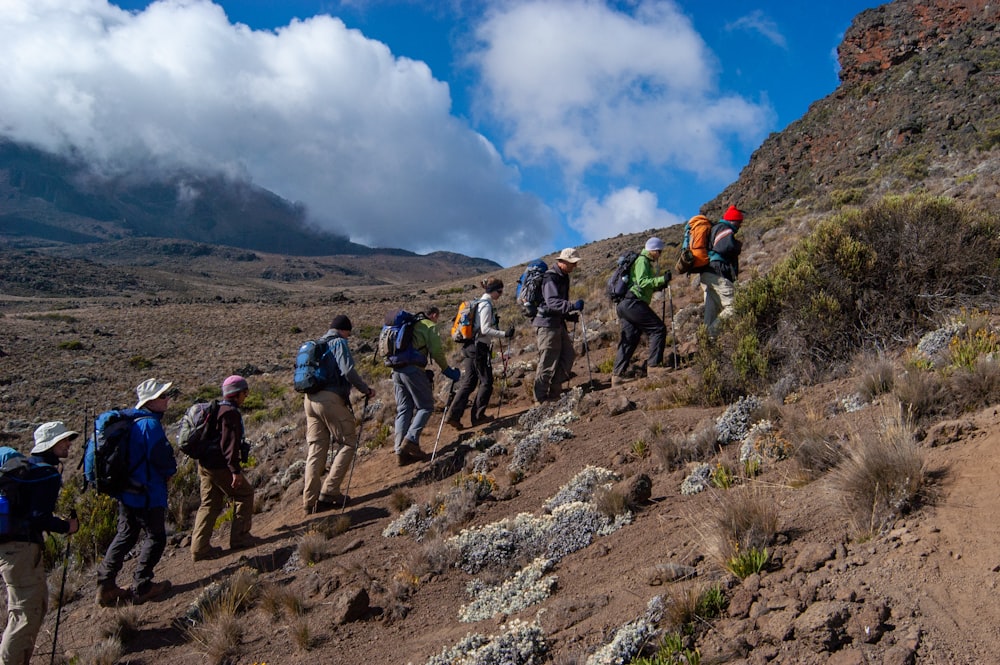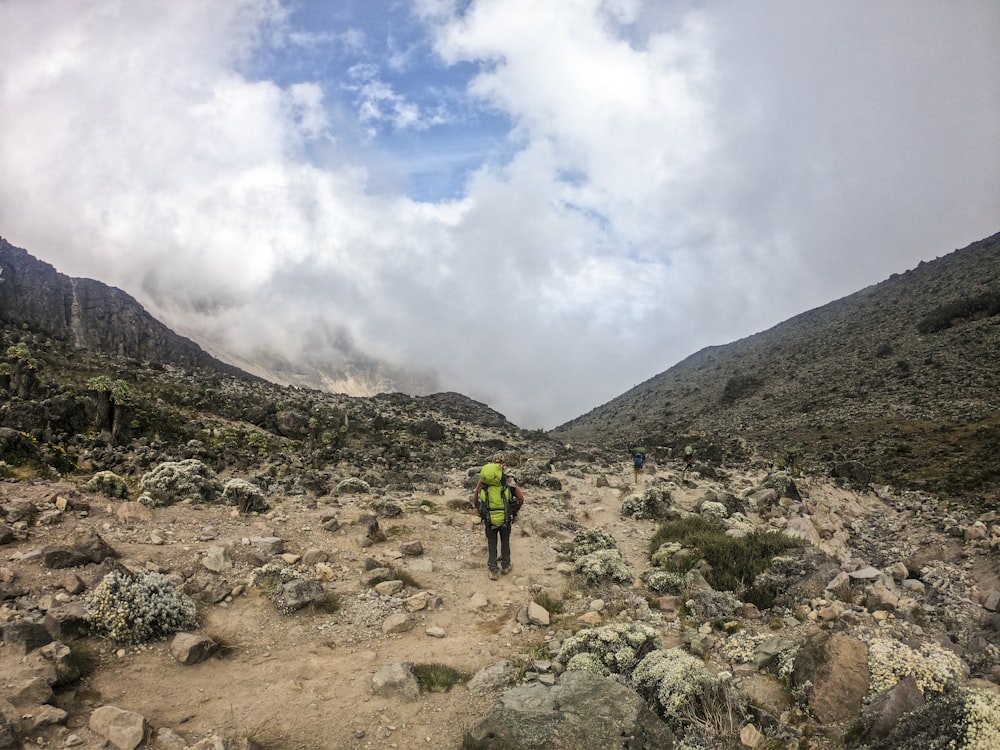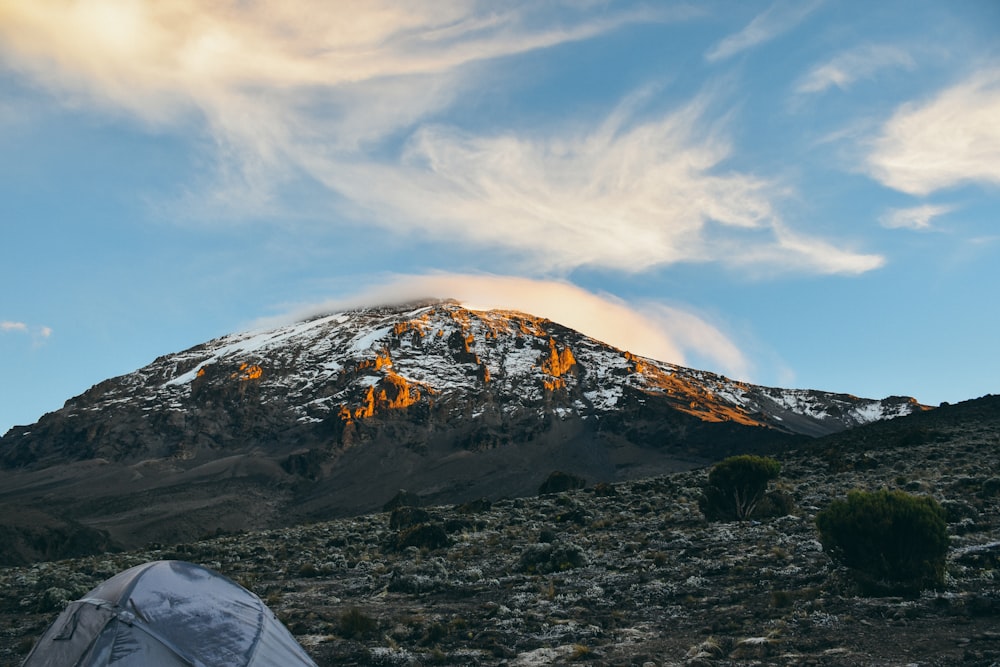How Hard Is It To Climb Kilimanjaro
Climbing Mount Kilimanjaro is no easy feat. The highest peak in Africa, its challenging terrain and unpredictable weather make it a tough climb for even the most experienced hikers.
We will explore what makes Kilimanjaro such a demanding climb, the different routes available to reach the summit, the success rate of climbers, essential gear and equipment needed for the journey, physical and mental preparation tips, as well as safety measures to keep in mind while tackling this incredible adventure.
Get ready for an exhilarating journey to the top of Africa’s tallest mountain.
Key Takeaways:
- Climbing Kilimanjaro is physically and mentally demanding, requiring preparation and training.
- Mt. Kilimanjaro’s high altitude and unpredictable weather make it a challenging climb.
- Proper gear, safety measures, and hiring a guide can increase the chances of a successful climb.
What Makes Mount Kilimanjaro a Challenging Climb?
Mount Kilimanjaro presents climbers with a myriad of challenges that make it a formidable ascent.
From the towering altitude to the demanding physical exertion required, conquering Kilimanjaro is no small feat.
1. High Altitude
The high altitude of Mount Kilimanjaro is one of the primary factors that make it a challenging climb for even the most experienced climbers.
At higher altitudes, the air becomes thinner, which results in decreased levels of oxygen that the body can intake.
This reduction in oxygen saturation can lead to altitude sickness, a condition that ranges from mild symptoms like headache and dizziness to severe cases of high altitude pulmonary edema (HAPE) or high altitude cerebral edema (HACE).
Proper acclimatization is crucial for climbers to adjust to the reduced oxygen levels gradually.
2. Unpredictable Weather
The weather on Mount Kilimanjaro can change rapidly, posing a significant challenge to climbers who must be prepared for varying conditions at different altitudes.
One of the key factors in conquering Kilimanjaro is having the right gear for all weather scenarios such as proper clothing, sturdy boots, and other essentials.
Climbers like Karl Egloff, Angela Vorobeva, and Anne Lorimor have experienced firsthand the impact of the unpredictable weather on their ascent.
Egloff, known for his speed records, emphasizes the importance of being ready for sudden shifts, such as extreme cold or heavy rainfall.
3. Physical Demands
The physical demands of scaling Mount Kilimanjaro require climbers to be in peak condition, both physically and mentally.
Climbers face extreme altitudes, temperature changes, and reduced oxygen levels which can lead to altitude sickness and exhaustion.
To conquer Kilimanjaro, climbers must endure steep inclines, rocky paths, and unpredictable weather conditions.
Training programs focusing on cardiovascular endurance, strength training, and acclimatization are essential to prepare for the climb.
Mental resilience is equally crucial, as climbers often battle fear, self-doubt, and fatigue during the challenging ascent.
Success stories like Michelle Ashley’s journey highlight the significance of dedication, perseverance, and meticulous preparation
What Are the Different Routes to Climb Kilimanjaro?
Climbing Kilimanjaro offers various routes, each with its unique challenges and scenic wonders within the breathtaking Kilimanjaro National Park.
1. Marangu Route
The Marangu Route, also known as the ‘Coca-Cola Route,’ is one of the most popular paths due to its gradual ascent and hut accommodations.
One of the main characteristics of the Marangu Route is its more gradual slope, making it a favorable choice for climbers looking for a less strenuous ascent.
The route is often referred to as the ‘tourist route’ due to its popularity and the amenities it offers, including bunk beds in shared huts along the trail.
This can be appealing for those who prefer more comfort during their climb.
The popularity of the Marangu Route can also be a downside, as it tends to be busier than other routes, especially during the peak climbing seasons.
This can diminish the sense of wilderness and solitude that some climbers seek when scaling Kilimanjaro.
Acclimatization is a crucial factor to consider as the gradual ascent may not give climbers enough time to properly acclimatize to the altitude.
It’s important for climbers to listen to their bodies, stay hydrated, and be aware of the symptoms of altitude sickness.
Despite some of the drawbacks, many climbers appreciate the convenience of the huts along the Marangu Route.
2. Machame Route
The Machame Route, known as the ‘Whiskey Route,’ is a popular choice for climbers seeking a more challenging and scenic ascent up Mount Kilimanjaro.
The diverse terrain of the Machame Route presents a fascinating challenge for climbers, ranging from lush rainforests to alpine deserts.
Climbers often mention how the route provides a sense of accomplishment due to its demanding yet rewarding nature.
Notable landmarks along the way include the striking Barranco Wall, a towering rock face that requires technical skills to navigate.
The iconic Lava Tower, offering breathtaking panoramic views of the surrounding landscapes.
Experienced climbers emphasize the importance of acclimatization and gradual ascent to combat altitude sickness effectively.
3. Lemosho Route
The Lemosho Route is renowned for its picturesque scenery and gradual acclimatization, offering climbers a longer expedition with stunning views.
One of the key appeals of the Lemosho Route is its diverse topography, from lush rainforests, moorlands to alpine deserts and glaciated peaks.
This variety not only makes the climb visually captivating but also allows hikers to acclimatize more effectively due to the gradual ascent.
4. Rongai Route
The Rongai Route, known for its tranquility and wilderness, provides a unique approach to climbing Kilimanjaro from the north.
What sets the Rongai Route apart is its peaceful ambiance, allowing climbers to connect more intimately with the surrounding nature.
This path is renowned for its varied wildlife sightings, including birds like the colorful Sunbirds or rarer species like the Montane White-eye.
The route presents a different set of challenges, with its steep ascents and rugged terrain demanding a different level of physical and mental endurance.
5. Northern Circuit Route
The Northern Circuit Route is the longest and most scenic path, offering unparalleled views from all directions and ample time for acclimatization.
The Northern Circuit Route spans approximately 56 to 75 kilometers, depending on the variations taken by climbers.
Its extended duration, typically lasting up to 9 days, allows for a more gradual ascent, aiding in altitude acclimatization.
While the route is known for its challenges, many climbers appreciate the solitude and pristine wilderness.
The diversity of landscapes it traverses, from lush rainforests and heath zones to alpine deserts and the arctic summit zone is appreciable.
This incredible journey offers a unique perspective of Kilimanjaro’s ecological zones and wildlife.
What Is the Success Rate of Climbing Kilimanjaro?
The success rate of climbing Mount Kilimanjaro varies depending on factors such as route chosen, climber’s preparation, and weather conditions.
Choosing the optimal route plays a crucial role in determining a climber’s success rate on the mountain.
Routes like the Marangu and Rongai tend to have higher success rates due to their gradual ascents, providing climbers with better acclimatization.
On the other hand, more challenging routes like the Machame and Lemosho demand higher levels of fitness and experience.
Experience level also significantly impacts a climber’s chances of reaching the summit.
Novice climbers may struggle with the physical and mental demands of the climb, while seasoned mountaineers are better equipped.
What Are the Essential Gear and Equipment for Climbing Kilimanjaro?
Having the right gear and equipment is crucial for a successful ascent, ensuring climbers are well-prepared to face the mountain’s challenges.
1. Clothing
Proper clothing is essential for climbers on Mount Kilimanjaro to stay warm, dry, and protected from the varying weather conditions.
Layering is key when it comes to choosing the right clothing for this challenging climb.
Experienced climbers recommend starting with a moisture-wicking base layer to keep sweat away from the skin.
On top of the base layer, an insulating mid-layer to trap heat and an outer shell made of weather-resistant material should be worn.
Insulated and waterproof gloves, a warm hat, and sunglasses are crucial for protecting extremities and warding off snow blindness at higher altitudes.
2. Sleeping Gear
Having appropriate sleeping gear is crucial for climbers to rest and recover during their expedition, ensuring they stay warm and comfortable at night.
First and foremost, a high-quality sleeping bag rated for sub-zero temperatures is essential for the chilly nights on Kilimanjaro.
Go for a down-filled bag for its superior warmth-to-weight ratio, keeping you cozy without adding unnecessary bulk to your pack.
Pair your sleeping bag with a durable and insulated sleeping pad to provide a barrier from the cold ground and enhance your comfort while sleeping.
Consider lightweight shelter options such as a four-season tent or a bivy sack that offers protection from the elements without weighing you down.
3. Hiking Gear
Appropriate hiking gear is essential for climbers on Mount Kilimanjaro to navigate the challenging terrain and elevation changes.
The trekking poles play a crucial role in providing stability and support on the uneven trails of Kilimanjaro.
Quality poles help distribute weight evenly and reduce strain on joints, especially during steep inclines and descents.
Sturdy footwear with good ankle support is vital to prevent injuries and ensure comfort throughout the long trek.
A reliable hydration system such as a hydration bladder or water bottles is necessary to stay hydrated at high altitudes.
4. Personal Items
Carrying essential personal items is crucial for climbers on Mount Kilimanjaro to maintain hygiene, comfort, and health throughout the expedition.
When preparing for a trek up Kilimanjaro, the right selection of toiletries can significantly impact your journey.
Items like sunscreen, lip balm, wet wipes, and hand sanitizer are critical to protect your skin and maintain cleanliness.
Basic medications such as painkillers, altitude sickness pills, and any personal prescriptions should not be overlooked.
Go for versatile products and lightweight containers to keep your backpack manageable while still having all the essentials at hand.
How Can One Prepare Physically and Mentally for Climbing Kilimanjaro?
Physical and mental preparation are key components in readying climbers for the challenges of ascending Mount Kilimanjaro, requiring a holistic approach to training and conditioning.
1. Cardiovascular Training
Cardiovascular training plays a vital role in preparing climbers for the strenuous physical exertion and high altitude challenges.
Specific exercises like running, cycling, and hiking are excellent choices to enhance endurance and stamina.
Running uphill can simulate the steep terrain of Kilimanjaro, preparing the muscles effectively.
Cycling helps in building leg strength crucial for the climb. Hiking on varying inclines mimics the elevation changes on the mountain.
Creating a training schedule that gradually increases in intensity can prevent injury and improve performance.
Successful climbers often incorporate interval training and hill repeats to boost aerobic capacity and handle the altitude with more ease.
2. Strength Training
Strength training is essential for climbers preparing to tackle the physical demands, requiring muscle endurance and overall body strength.
Core strength plays a crucial role in maintaining proper posture and stability during the long ascent, preventing fatigue and potential injuries.
Focusing on leg muscles through exercises like squats and lunges helps enhance the power needed for navigating steep terrain.
Incorporating upper body conditioning exercises such as push-ups and rows strengthens the arms and shoulders.
Strength training improves physical performance and also reduces the risk of overuse injuries by building resilience in the muscles and joints.
3. Mental Preparation
Mental preparation is crucial for climbers undertaking the challenging ascent, requiring focus, determination, and mental resilience.
Use of visualization techniques, where individuals mentally imagine themselves successfully navigating the difficult terrains is recommended.
This practice helps build confidence, enhances focus, and prepares climbers for the various challenges they may encounter on the journey.
Mindfulness practices play a vital role in helping climbers stay present and calm amidst the intense physical exertion and high altitudes.
What Are the Safety Measures and Tips for Climbing Kilimanjaro?
Ensuring safety during the ascent with essential measures and tips that climbers need to follow for a successful and secure climb.
1. Acclimatize Properly
Proper acclimatization is key to mitigating altitude-related risks and ensuring climbers adapt safely to the changing elevation levels.
When ascending Mount Kilimanjaro, the body needs time to adjust to the decreasing oxygen levels as altitude increases.
Without proper acclimatization, climbers may experience symptoms of altitude sickness, such as headaches, nausea, and fatigue.
Guide teams play a vital role in facilitating this adjustment process by implementing gradual altitude gain strategies.
These strategies include pacing the climb to allow for gradual adaptation, ensuring climbers stay hydrated, and monitoring individuals.
By carefully managing the acclimatization process, climbers greatly improve their chances of reaching the summit safely and enjoying the journey.
2. Hire a Guide or Join a Tour Group
Hiring a knowledgeable guide or joining a reputable tour group is crucial for climbers, providing expertise, support, and safety assurance.
Experienced guides play a pivotal role in ensuring a successful and safe ascent of Kilimanjaro.
They are well-versed in the terrain, weather conditions, and altitude challenges of the mountain, offering invaluable navigation skills.
Guides are also trained in first aid and emergency response, ready to provide immediate assistance if needed.
Choosing a reliable guide team with a solid track record and positive reviews is paramount for a smooth climbing experience.
Opting for group tours not only enhances safety but also fosters camaraderie among climbers, creating a supportive environment.
3. Stay Hydrated and Nourished
Maintaining proper hydration and nutrition is essential to sustain energy levels, prevent altitude sickness, and ensure overall well-being.
One of the most critical aspects of climbing Kilimanjaro is staying adequately hydrated, aiming to drink at least 3-4 liters of water daily.
It’s also vital to consume nutritious meals that provide a balance of carbohydrates, proteins, and fats to fuel the strenuous trek.
Replenishing electrolytes is crucial to maintain proper muscle function and hydration. Plan meals in advance with high-energy snacks.
Different hydration strategies might include using hydration packs or electrolyte supplements.
Considering altitude-specific dietary considerations like increased carbohydrate intake can help adapt to the lower oxygen levels.
Frequently Asked Questions
1. How Hard Is It To Climb Kilimanjaro?
A: The difficulty of climbing Kilimanjaro varies for each person, depending on their physical fitness and experience with high altitude trekking. However, it is generally considered to be a challenging and strenuous climb that requires proper preparation and training.
2. What Makes Climbing Kilimanjaro Difficult?
A: There are several factors that make climbing Kilimanjaro difficult, including the high altitude, steep and rocky terrain, and rapid changes in weather conditions. The lack of oxygen at high altitudes can also make it physically demanding and mentally challenging.
3. Do I Need Previous Climbing Experience to Climb Kilimanjaro?
A: While previous climbing experience can be helpful, it is not required to climb Kilimanjaro. However, it is important to have a good level of physical fitness and endurance to tackle the challenge.
4. What is the Success Rate for Climbing Kilimanjaro?
A: The success rate for climbing Kilimanjaro varies from 50% to 85%, depending on the route and operator chosen. The success rate can also be affected by factors such as altitude sickness, weather conditions, and individual fitness levels.
5. How Can I Prepare for Climbing Kilimanjaro?
A: To prepare for climbing Kilimanjaro, it is recommended to engage in a regular exercise routine that includes cardio, strength training, and hiking. It is also important to acclimatize to high altitudes by spending some time at a higher altitude before attempting the climb.
6. Are There Any Risks Involved in Climbing Kilimanjaro?
A: Like any high-altitude trek, climbing Kilimanjaro comes with some risks. Altitude sickness, extreme weather conditions, and injuries from falls are some of the potential risks. However, with proper preparation, experienced guides, and following safety protocols, these risks can be minimized.


